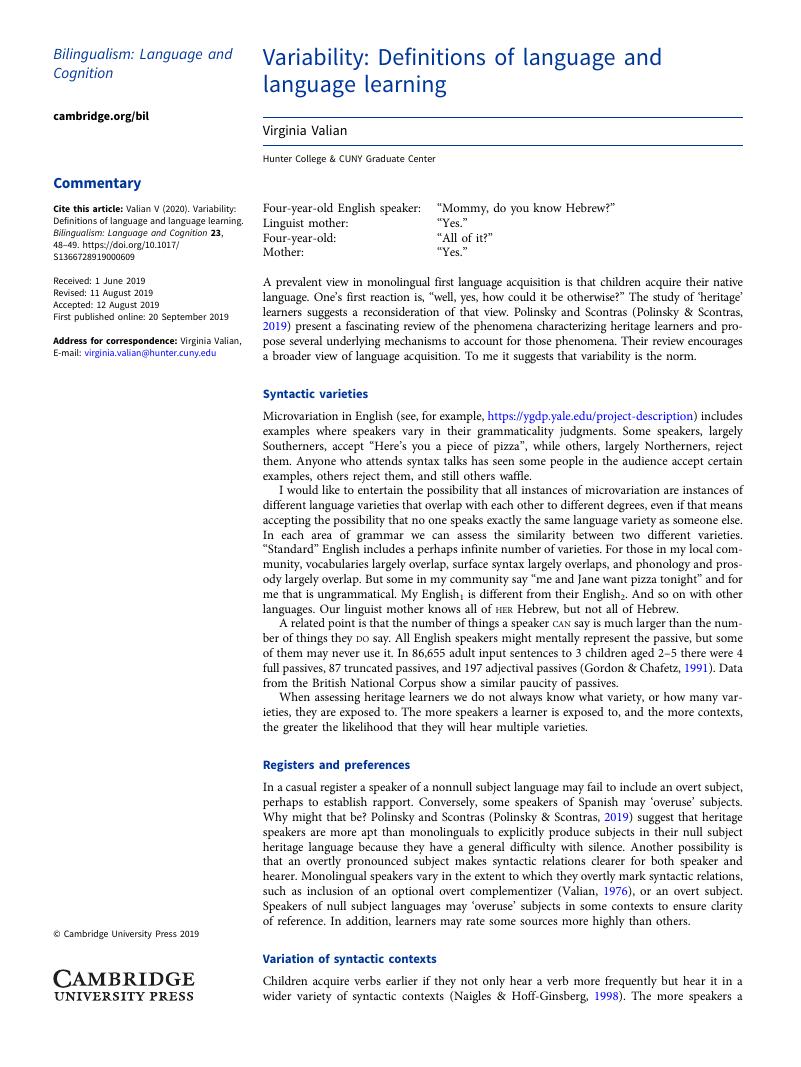Crossref Citations
This article has been cited by the following publications. This list is generated based on data provided by Crossref.
Abutalebi, Jubin
and
Clahsen, Harald
2020.
Heritage languages, infants’ language recognition, and artificial grammars for bilingualism research.
Bilingualism: Language and Cognition,
Vol. 23,
Issue. 1,
p.
2.
De Cat, Cécile
2022.
Opportunities and challenges in the analysis of the Multilingual Assessment Instrument for Narratives (MAIN).
First Language,
Vol. 42,
Issue. 2,
p.
321.
Abbasi Mojdehi, Hamed
and
Ali Zarei, Abbas
2023.
Vertical Grammatical Variability in Writing.
BELT - Brazilian English Language Teaching Journal,
Vol. 14,
Issue. 1,
p.
e44578.


